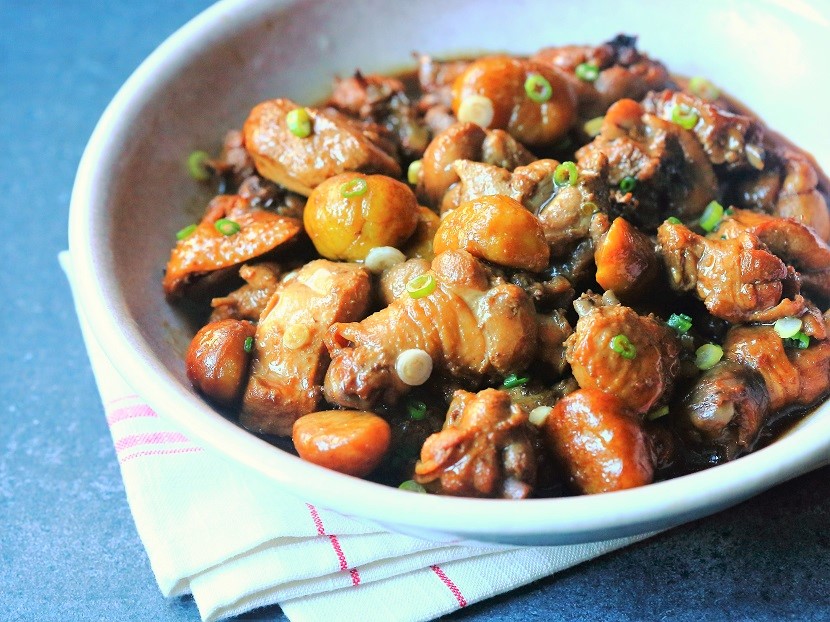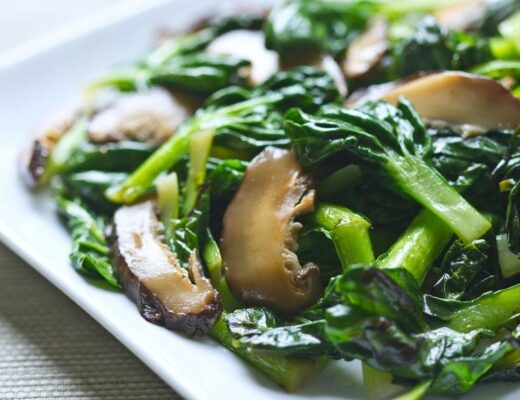Last Updated on March 13, 2021 by Simon Fan
Chestnuts, among all nuts, are special in many ways.
To begin with, they’re a cold-weather icon, and a big celebrity during the holiday season because of their appearance in a popular Christmas song.
If you compare the nutritional composition of chestnuts with those of other nuts, you’ll notice that chestnuts rank highest in starch and lowest in oil. That makes them more comparable to wheat, rice, and potatoes. Some even call them a “grain that grows on a tree.”
No wonder this ancient nut has been a staple source of nutrition for centuries throughout Asia, Europe, and America. By the way, a chestnut tree can live up to 500 years.
As a cooking ingredient, the high starch content in chestnuts means they’re a perfect component in stuffing, sauces, and purees. Their natural sweetness shines in desserts such as mont blanc and marrons glacés.
In savory dishes, chestnuts pair extremely well with game and poultry. A great example is roasted goose stuffed with chestnuts, a very popular dish for Christmas in Europe.
The dish I’m introducing here, braised chicken with chestnuts, is another example. It’s a popular dish in many parts of China. Whole chestnuts and chicken are braised together until their flavors meld. The sugar in the nuts adds a subtle sweetness to the sauce, and their starch thickens the sauce beautifully.
To get the best results for this dish, use raw chestnuts. Peeling chestnuts can be quite easy if you know the right method. There’s no shortage of useful tips on the web for that task, which typically involves marking an “x” on the flat side of the chestnuts, followed by roasting in the oven or boiling in water. In the recipe below, I use a method that’s surprisingly simple and effective. Of course, you can also use shelled and cooked chestnuts, which are available in the freezer section at Chinese markets.
“Chestnuts roasting on an open fire…” When you finish singing that beautiful song, give this recipe a try—it will make the season bright.
Braised chicken with chestnuts
Serves 2
Ingredients
12 raw chestnuts in the shell, or thawed frozen chestnuts (shelled and cooked)
Half of a Cornish hen (about 1 lb/450 g), or the same amount of chicken parts of your choice
1 tablespoon light soy sauce
1 teaspoon dark soy sauce
1 tablespoon Shaoxing wine
1 teaspoon sugar
¼ teaspoon Zhenjiang (aka Chinkiang) vinegar
1 tablespoon vegetable oil
2 scallions, one cut in half and the other thinly sliced
1-inch (2.5 cm) piece of ginger, sliced
1 cup (240 ml) water
⅛ teaspoon freshly ground white pepper
½ teaspoon sesame oil
Directions
- Remove the shells of the chestnuts. In a pot, bring water to a boil. Add the shelled chestnuts and boil for 1 minute, then turn off the heat. Taking one chestnut from the water at a time, use a thick and dry towel to rub the skin off the nut. The skin should come off easily. If not, let it soak a bit longer in the hot water and try again.
- Cut the chicken into bite-size pieces. In a small bowl, combine the soy sauces, wine, sugar, and vinegar.
- Place a wok or Dutch oven over high heat until hot, then swirl in the oil. When the oil starts to shimmer, add the scallion halves and ginger, and stir-fry for 15 seconds. Add the chicken pieces and stir-fry until their surface moisture has evaporated, about 2 minutes. Next, add the soy sauce mixture and stir to distribute for 30 seconds. Add the water and chestnuts (if using pre-cooked chestnuts, add them at a later time), bring the liquid to boil, and then adjust the heat to maintain a gentle simmer. Cover and cook until the chicken is cooked through and the chestnuts have turned mealy but not mushy, about 15 minutes. If using pre-cooked chestnuts, add them when the chicken is just cooked through and simmer for a few minutes.
- Uncover, discard the scallion halves, and add the pepper. Turn up the heat and reduce the cooking liquid to approximately ½ cup (120 ml), about 5 minutes. Adjust the seasoning as needed, and mix in the sesame oil. Serve right away garnished with the sliced scallion.



